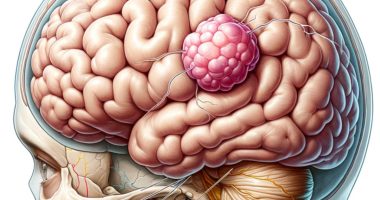Hip fracture
About the disease
A hip fracture is a partial or complete damage to the integrity of the femur bone.
Femoral fractures account for about 5% of fractures in the structure of fractures. The most significant difficulties in treatment arise if the integrity of the femoral neck is compromised (the fracture line runs between the femoral head and the greater trochanter). Such injuries most often occur in older people against the background of age-related osteoporosis. The danger of this condition is that the artery that feeds the femoral head is damaged. As a result, the consolidation of the fracture becomes much more difficult, which determines a severe prognosis. Thus, if surgery is not performed over time, a complication such as aseptic necrosis of the femoral head develops. The absence of its periosteum creates an additional difficulty for the fracture fusion of the femoral neck.
Depending on the skin condition, femoral fractures can be opened when the bone fragments damage the skin and close when the skin in the area of injury is intact. An unfavorable consequence of open fractures is the likelihood of profuse bleeding. However, the risk of this pathologic condition exists in open and closed diaphyseal fractures since the femoral artery, which is a large vessel, passes near the bone. Therefore, patients with closed femoral fractures require dynamic medical monitoring, which is aimed at excluding internal bleeding.
The physician diagnoses based on clinical signs, examination, and X-ray findings. Radiography allows the visualization of the femur in several projections and accurately determines the direction of the fracture line, which is essential for making a treatment plan. If the fracture is not displaced, the doctor restores the anatomy of the bone, fixes it in the correct position with spokes, and then applies a plaster cast. Muscle traction is performed beforehand if there is a significant displacement of bone fragments. However, the most rational method in this situation is surgical intervention.
Types of hip fractures
According to the anatomical characteristics of the injury, the following types of hip fractures are distinguished.
Proximal fracture. In this category, there are two variants – transverse fractures (the line of bone damage runs between the greater and lesser vertebrae) and femoral neck fractures, which are classified into three types.
- The first type includes subcapital, where the fracture line runs precisely under the head.
- The second type is transcervical. The line between the bone fragments runs in the region of the surgical neck of the femur.
- The third type is a subcapital fracture with displacement.
Diaphyseal fracture is when the integrity of the bone is damaged at the level of the femoral body. This category distinguishes fractures of the upper, middle, and lower thirds.
Fracture of the distal part, which forms the knee joint. In this case, the condyles (internal or external) may be injured.
Symptoms of a hip fracture
The main symptoms of a hip fracture are:
- Pain sensations. Traumatic injuries of the femoral neck are localized in the inguinal region, and the pain is absent at rest and appears when trying to turn or bend the leg. If the body of the femur is traumatized, the pain sensations are determined directly in the thigh area and are present even at rest.
- Disturbance of the functional state of the lower limb. With traumatic damage to the femur, the supporting function of the leg is impaired, so the person cannot stand (at the same time, the pain increases).
- Subcutaneous hemorrhage. The appearance of a “bruise” is due to the rupture of blood vessels running in soft tissue structures.
- Change in the shape of the limb. This symptom is especially significant in diaphyseal fractures in the middle third of the femur.
- Pathologic mobility and crepitation. These signs are detected during an objective examination of the patient, but they are insignificant because the muscles of the femoral region are massive and robust.
Femoral trauma can lead to a systemic inflammatory response syndrome. This results in an increase in body temperature and signs of intoxication, which need to be corrected accordingly.
Causes of hip fractures
The immediate cause of hip fractures is trauma (domestic, occupational, or road traffic). In elderly patients, such injuries often occur with minor mechanical load (fall or impact), associated with an age-related decrease in bone strength. Therefore, for patients over 50 years of age, as well as on individual indications, a calculation of the probabilistic risk of hip fracture using an extraordinary FRAX scale is carried out. If a person falls into a high-risk group, he is prescribed preventive therapy with calcium preparations, vitamin D, and bisphosphonates (which slow down the destruction of bone tissue). Menopausal women at high risk of fractures are also prescribed menopausal hormone therapy (estrogens take an active part in the formation of bone tissue, improving its strength).
Diagnosis of hip fractures
According to clinical guidelines, radiologic scanning is the primary method of diagnosing hip fractures. The study is carried out in the patient’s supine position in several projections with mandatory capture of the bone throughout, including the hip and knee joint. What does the fracture look like on the radiograph? The main signs are:
- the presence of a linear defect;
- the curvature of the outer contour of the bone;
- The presence of displacement of the fragments (for a specific type of fracture).
In difficult clinical situations, computed tomography or magnetic resonance imaging may be required in surgical planning.
Treatment of a hip fracture
Treatment of a hip fracture can be done with conservative and surgical methods.
Conservative treatment
Conservative treatment is recommended for uncomplicated fractures. It consists of reconstructing the anatomy of the bone, fixing the fragments in the correct position, and applying an immobilizing plaster cast. The latter should cover the knee and hip joint. In case of significant displacement, skeletal traction can be performed at a preliminary stage.
Surgical treatment
Surgery for hip fractures is recommended for severe injuries. Surgical intervention is performed under general or spinal anesthesia and consists of several stages:
- providing surgical access to the traumatized area;
- Matching of bone fragments by normal femoral anatomy;
- application of fixation plates and fixation with screws;
- wound closure;
- Plaster bandage, which provides immobility but at the same time leaves the wound open (you can monitor the healing process of the wound after the passage of time to remove the stitches).
All these treatment options are available in more than 800 hospitals worldwide (https://doctor.global/results/diseases/hip-fracture). For example, Hip fracture surgery can be done in 35 clinics across Germany for an approximate price of $14.7 K (https://doctor.global/results/europe/germany/all-cities/all-specializations/procedures/hip-fracture-surgery).
Hip fracture prevention
Prevention of hip fracture involves adherence to nonspecific recommendations:
- Increased motor activity to improve bone strength;
- balanced, varied diet rich in foods that are sources of calcium and vitamin D;
- natural tanning during safe hours – to trigger vitamin D synthesis in the skin;
- reduction of body weight in case of excess weight;
- calculation of individual fracture risk according to the FRAX scale (with bone mineral density determined by densitometry);
- use of protective equipment when carrying out traumatic work.
Rehabilitation after hip fracture
Rehabilitation after a hip fracture should begin as early as possible – even before consolidation of the bone fragments. Against the background of prolonged immobilization, it is essential to perform breathing exercises, as they will reduce the risk of congestive pneumonia (the latter is challenging to treat, which is why its prevention is so important). Soon after surgery, minor active and passive movements of the leg are recommended, which will prevent atrophy of the muscle compartment. This recommendation is especially relevant for older people. A person in old age very quickly loses activity and refuses to do exercises. As a result, necrotic tissue damage occurs, heart failure occurs, and, as a consequence, lethal outcomes.
After the fusion of the bone fragments, the “development” stage of the limb begins. To restore functional activity of the leg, it is essential to follow a comprehensive approach, including a rehabilitation program tailored to each patient. The main rehabilitation measures include therapeutic exercise, massage, electrical stimulation, and other physical procedures.





